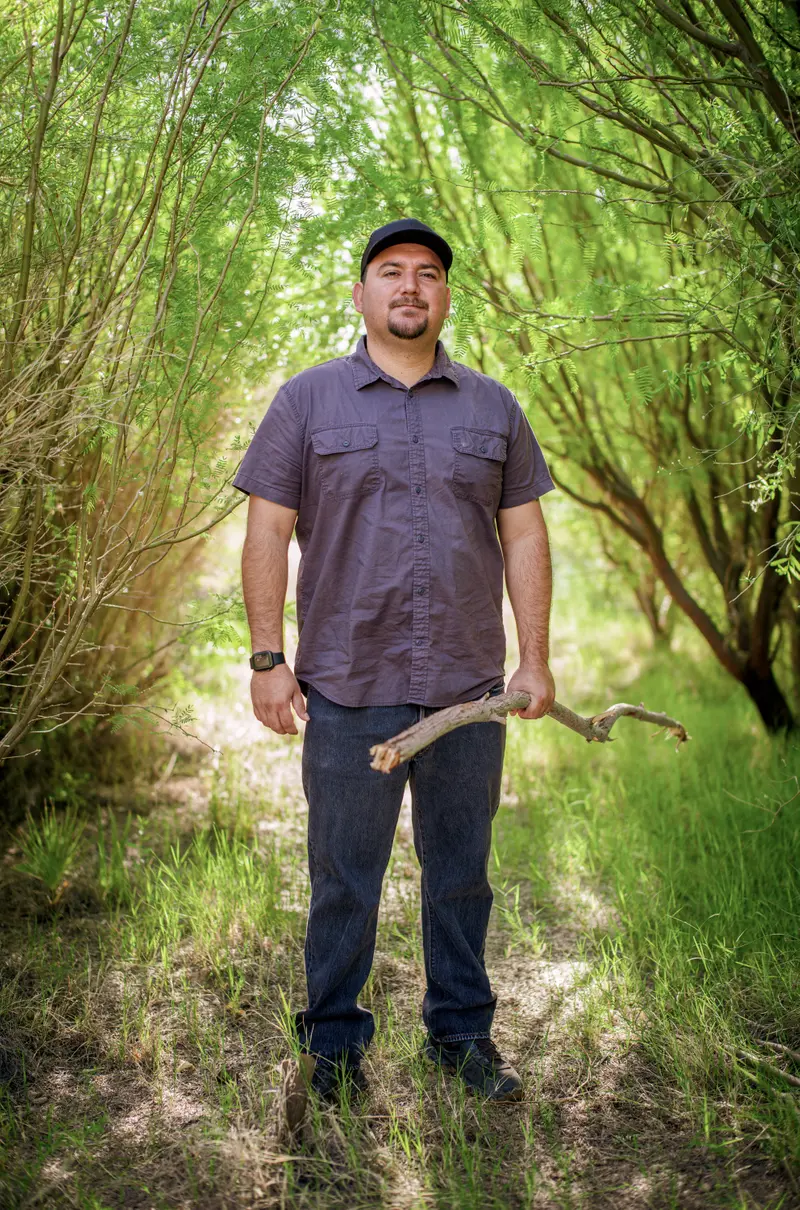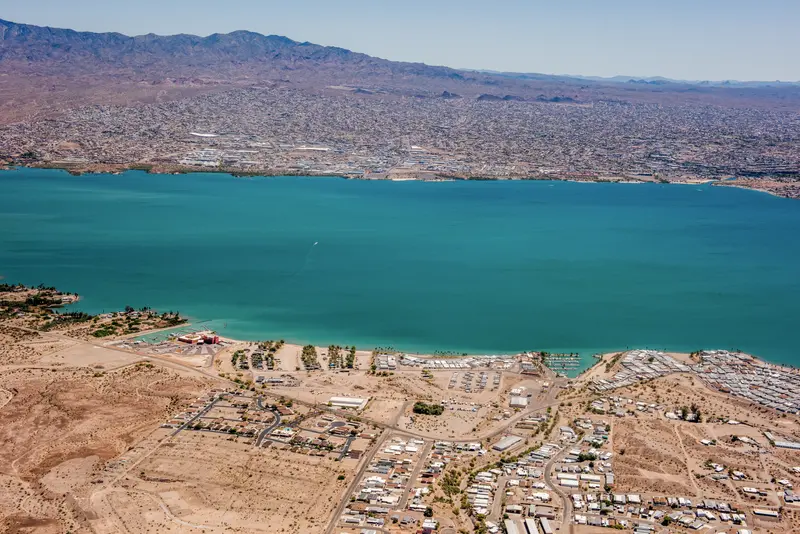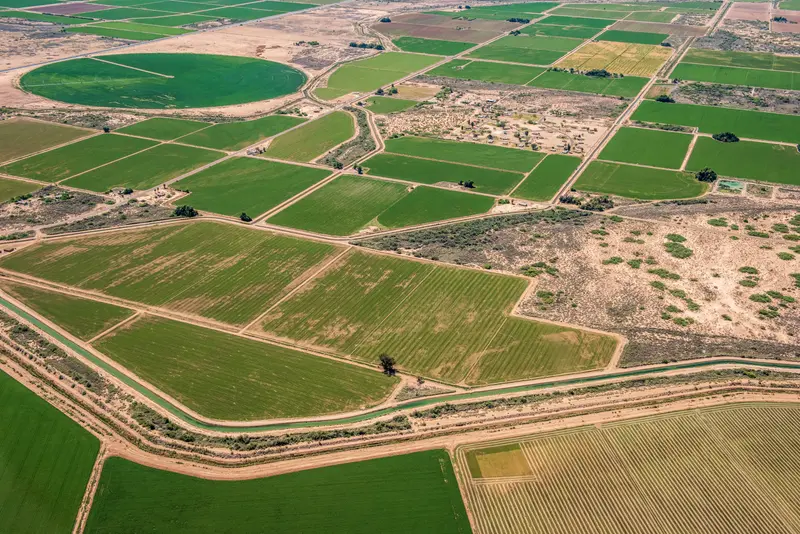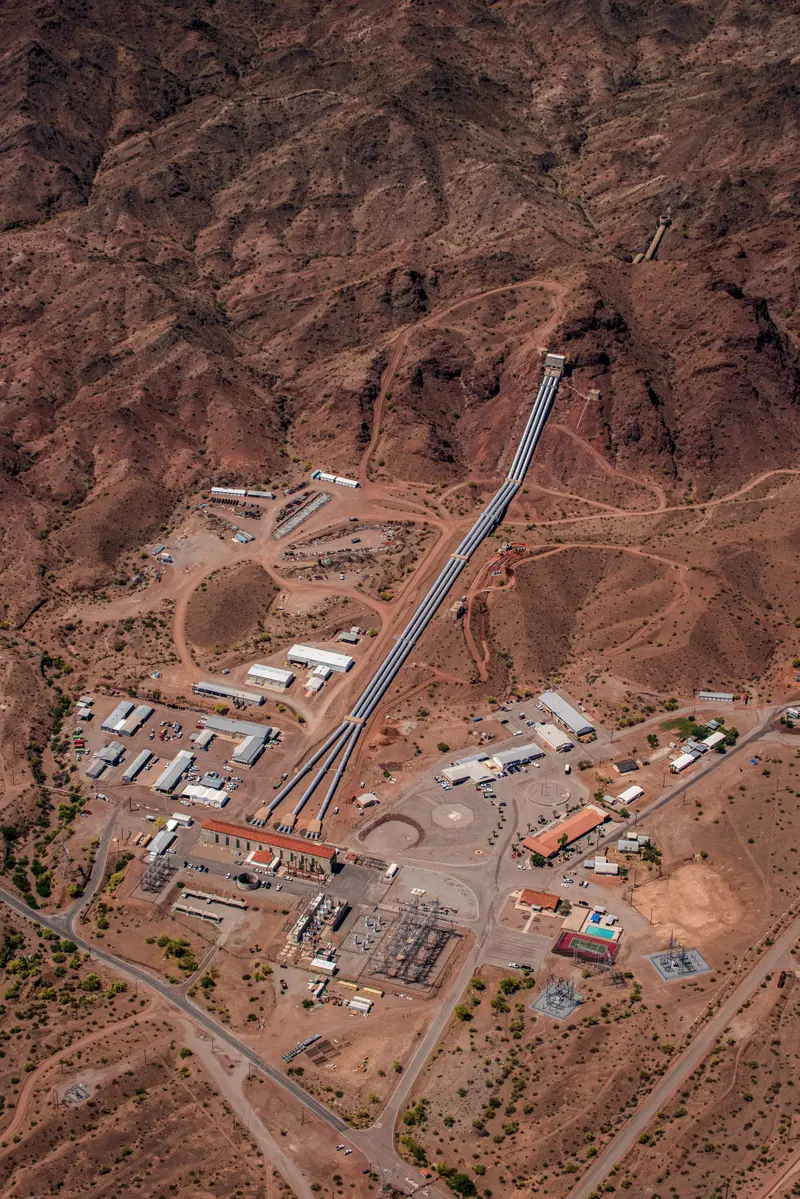At night, the lights of Lake Havasu City’s hotels, boat launches and neighborhoods reflect off the reservoir that gave this busy Arizona tourist town its name. The federal government dammed the Colorado River just downstream in the 1930s, providing the water and recreation opportunities that have allowed the community to flourish.
The opposite side of the reservoir is dark and so quiet that water lapping on the shore and bats clicking overhead can be heard over the distant hum of boat engines. This is the Chemehuevi Indian Tribe’s reservation in California. The water that rose behind Parker Dam to create Lake Havasu washed away homes and flooded about 7,000 acres of fertile Chemehuevi land, including where members grazed cattle.
The communities across the reservoir reflect the vast divide in economic opportunities between Indian Country and the rest of the West, which has been perpetuated, in large part, by who received water and who did not.
In 1908, the U.S. Supreme Court ruled that the federal government owed tribes enough water to develop a permanent home on their reservations and that their water rights would hold senior priority, meaning they trumped those of others. In the Colorado River Basin, most tribes, even in a drought, should get water before Phoenix, Las Vegas, Los Angeles and elsewhere.
More than a century later, only a few basin tribes have benefited from this system. Of those that have, some live near federally funded canals and pipelines that can deliver water to their land, others received money to build their own water systems and some negotiated for the right to market their water to other users. The Gila River Indian Community, for instance, recently struck a deal with the federal government to forgo using some of its water in exchange for up to $150 million over the next three years, depending how much water it conserves, and $83 million for a new pipeline.
But most of the basin’s 30 federally recognized tribes have faced seemingly endless barriers to accessing and benefiting from all of the water to which they’re entitled. The Chemehuevi’s reservation fronts about 30 miles of the Colorado River, yet 97% of the tribe’s water remains in the river and ends up being used by Southern California cities. The tribe never receives a dollar for it.
The water that has already been guaranteed to basin tribes but remains unused totals at least 1 million acre-feet per year — nearly one-tenth of the Colorado River’s flow in recent years and nearly four times the Las Vegas metro area’s allocation. If sold outright, this water would be valued at more than $5 billion, according to a ProPublica and High Country News analysis. For the Chemehuevi, a tribe with about 1,250 members, that means the amount of water it has on paper but doesn’t use would have a one-time value of at least $55 million.
Steven Escobar, the Chemehuevi’s tribal administrator, grew up testing his mettle against the Colorado River’s currents, swimming across its cold waters upstream of the reservoir. He still thinks of the river in terms of struggle. But now, it’s a struggle for the tribe to get the same help from the federal government to access water as others have, or, if not, to get compensation for what’s legally theirs.
“All that development and governmental support that they provide every state, that should be the same thing they provide to tribes,” Escobar said. “We’ve had to fight for everything out here.”

As demand on the Colorado River far exceeds its supply, tribes worry that they’ll never receive the water they’re owed.
The Chemehuevi are left in a bind. The tribe doesn’t have the pumps or other infrastructure necessary to deliver its full allotment of river water to its reservation. While the federal government gave the tribe a grant to build a small reservoir, neither it nor the state of California has allocated money to build a larger delivery system.
Even as a backup option, the tribe is unable to lease its water to other users, like rapidly growing cities, or earn money by leaving it in the river to preserve the waterway. Antiquated laws and court rulings typically allow tribes to be paid only to conserve water they previously used. Any changes to how a tribe could market its water would take an act of Congress.
“This is a long-standing problem,” said Mark Squillace, a professor at the University of Colorado Law School. “From the perspective of the people using that water, why would they pay when they’re already getting it for free?”
The Law of the River at Work
A half-century ago, the Bureau of Reclamation began construction on a massive canal called the Central Arizona Project to send the waters that flooded the Chemehuevi’s land 336 miles across the desert to Phoenix and Tucson. The pumps that power the system, which help deliver the state’s share of the Colorado River, are the largest single consumer of electricity in the state.
Meanwhile, the Chemehuevi rely on a single diesel pump to draw water six stories up to the plateau where they live above Lake Havasu.

For at least 50 years, the river’s decision-makers have recognized this disparity in water access. In 1973, a body called the National Water Commission submitted a report to Congress: “In the water-short West, billions of dollars have been invested, much of it by the Federal Government, in water resource projects benefiting non-Indians but using water in which the Indians have a priority of right if they choose to develop water projects of their own in the future.”
For tribes, the first challenge is securing their water rights. After the Supreme Court’s 1908 decision confirming tribes’ right to water, two paths emerged to quantify and settle the amount and details of those rights. Tribes could, with the backing of the Department of the Interior, negotiate with the state where their reservation is located. Or they could go to court. Fourteen basin tribes are still in the midst of this process, but either path they choose presents trade-offs.
Tribes that negotiate typically need to trade some of the water they believe they’re owed in exchange for money to build water-delivery infrastructure. They can also trade their water priority — leaving them more susceptible when allocations are cut, a reality that’s already threatening to curtail tribes’ water amid the West’s ongoing drought.
For tribes that choose to go through the courts to get their water, there’s no opportunity to negotiate for funding for canals, pipes and pumps, meaning there’s no way to move the water they’re awarded onto a reservation.
“It’s not enough to have the right to the water,” Squillace said. “You also have to have the infrastructure.”
Highlighting the difficulties in converting rights to water on paper into actual water on a reservation, tribes around the West that secured a negotiated settlement for their rights only increased their agricultural land use by about 9% and saw no increase in residential or industrial development, according to estimates from a recent study published in the Journal of the Association of Environmental and Resource Economists.
And if a tribe can’t move water, it often can’t monetize it.

Laws passed between 1790 and 1834, known as the Indian Non-Intercourse Acts, have the effect of prohibiting tribes from leasing water beyond the borders of their reservations without congressional approval. Settlements also typically bar them from permanently selling their water and often prohibit their right to lease it.
“This Is What’s Left”
Politicians packed a conference room at the Arizona Capitol in April, where they unveiled an agreement to pay the Gila River Indian Community millions of dollars to leave its water in Lake Mead. Officials took turns at the lectern extolling tribes for their role in preserving the Colorado River.
“We don’t have any more important partners in this effort than in Indian Country,” Deputy Secretary of the Interior Tommy Beaudreau said.
When the Gila River Indian Community negotiated its water rights, the Central Arizona Project had begun carrying Colorado River water near its reservation south of Phoenix and the tribe had some political clout after spending millions of dollars on lobbying. Those advantages allowed the tribe to negotiate tens of millions of dollars for infrastructure to deliver its water and the right to lease tens of thousands of acre-feet to nearby cities and a mining company. Its settlement has now made the tribe a well-compensated partner in conservation efforts.
“These are truly historic investments in directly tackling the challenge presented to our state and our region by the historic drought,” Gila River Indian Community Gov. Stephen Roe Lewis said during the April news conference announcing the deal to trade more water for money. The tribe declined requests for additional comment, as it is negotiating further water deals.
The Chemehuevi, by contrast, can’t access or lease most of their water. Their rights were quantified and settled via the courts in the 1960s, at a time when the tribe didn’t have federal recognition. So it didn’t receive infrastructure funding.
Escobar, the Chemehuevi’s tribal administrator, would prefer to use his tribe’s water, not lease it. He wants to expand pumping capacity and construct a cascading series of reservoirs. Once the Chemehuevi access the water, they could use it for more houses to bring enrolled members back to their land, new businesses to provide jobs and increased farming to grow the reservation’s economy.
Escobar talked about his dreams and the difficulty in developing Indian Country as he drove past the frames of unused greenhouses, evidence of a failed venture. Near a field where the tribe’s single tractor was working the soil, Escobar described the Chemehuevi’s agricultural plans. Behind him, Lake Havasu covered soil that could’ve been productive fields or pastureland. In front of him stretched sandy desert where the federal government said the tribe should harvest crops.
“This is what’s left,” he said of the tribe’s potential farmland that wasn’t submerged by the reservoir. “It’s sad.”
After the once-nomadic Chemehuevi fought for recognition of their tribe and their reservation, they partnered with the University of Southern California to develop a plan to farm 1,900 acres using the 11,340 acre-feet of water per year, about 3.7 billion gallons, that the government allotted them — at least on paper. But, in a good year, the Chemehuevi farm only 80 acres, growing melons for food, devil’s claw for basket weaving and cottonwoods for a riparian restoration project.
If it can’t transport more water to expand the farm, Escobar said, the tribe could accept leaving water in the river in exchange for compensation. “We want to be a benefit to the system,” he said, “but right now, they’re making it hard.” Many non-Indigenous people, and a few tribes, around the basin earn money limiting their water use, whether by fallowing farm fields or ripping out lawns.
Why shouldn’t all tribes be paid, Escobar asked.














